注解
什么是注解
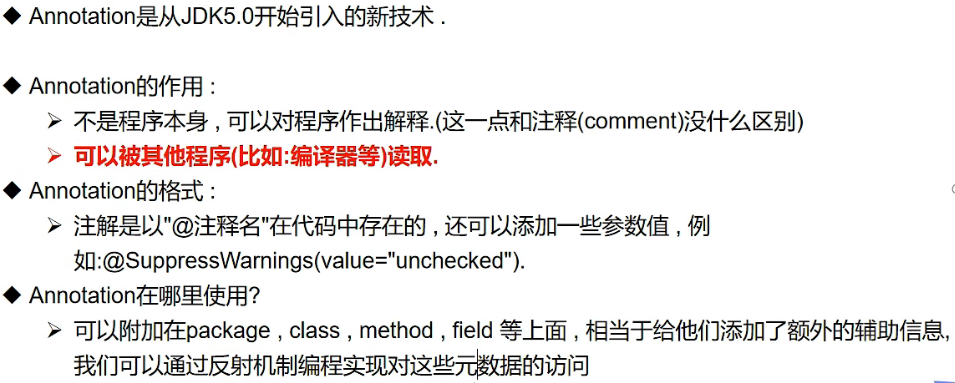
内置注解
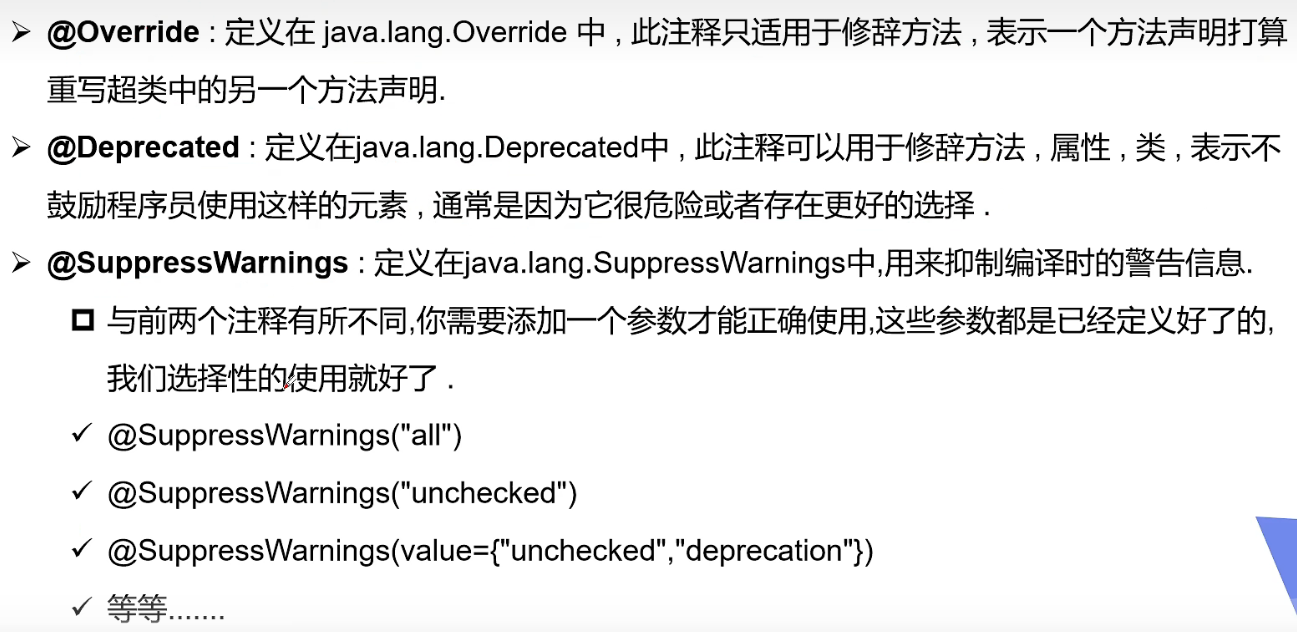
元注解
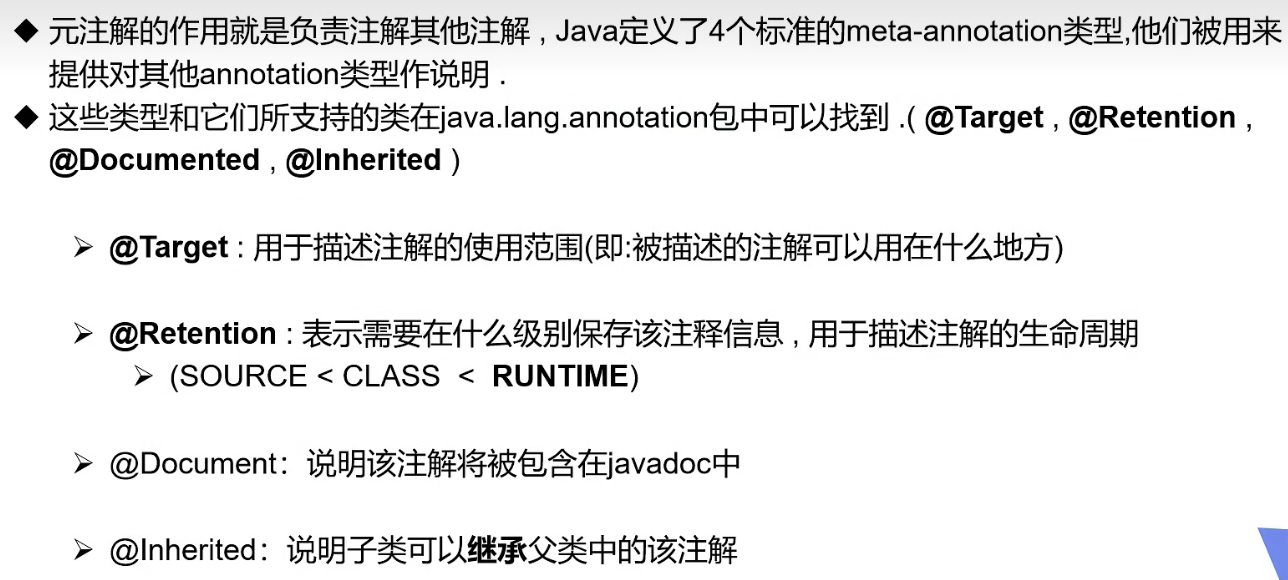
自定义注解

1
2
3
4
5
6
7
8
9
10
11
12
13
14
15
16
17
18
19
20
21
22
23
24
25
26
27
28
29
30
31
32
33
34
35
| package annotation;
import java.lang.annotation.ElementType;
import java.lang.annotation.Retention;
import java.lang.annotation.RetentionPolicy;
import java.lang.annotation.Target;
public class Test01 {
@MyAnnottation(schools = {"123"})
public void test() {
}
@MyAnnottation2("a")
public void test2() {
}
}
@Target({ElementType.TYPE, ElementType.METHOD})
@Retention(RetentionPolicy.RUNTIME)
@interface MyAnnottation {
String name() default "";
int age() default 0;
int id() default -1;
String[] schools();
}
@Target({ElementType.TYPE, ElementType.METHOD})
@Retention(RetentionPolicy.RUNTIME)
@interface MyAnnottation2 {
String value();
}
|
反射
在游戏运行的时候,把新的代码注入(跑进去)。用Hook(钩子),在游戏运行的时候,改变游戏的数据。
还可以获取注解,获取类的所有东西
静态VS动态
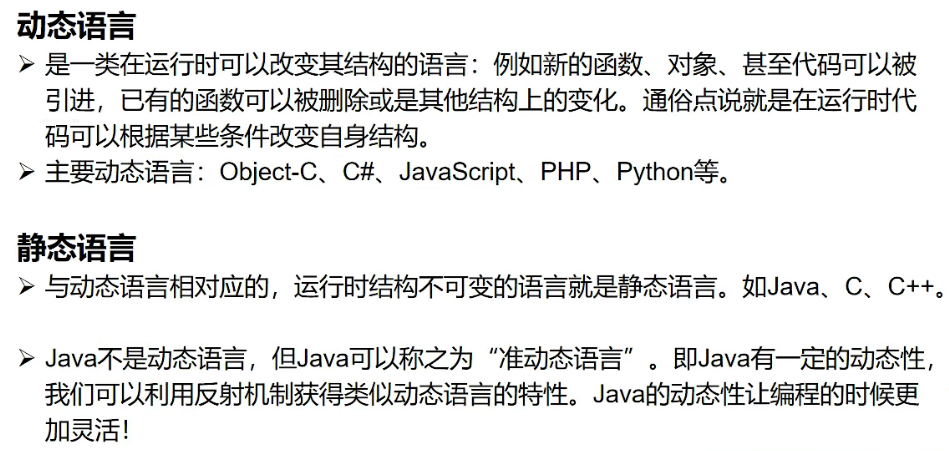
反射是什么
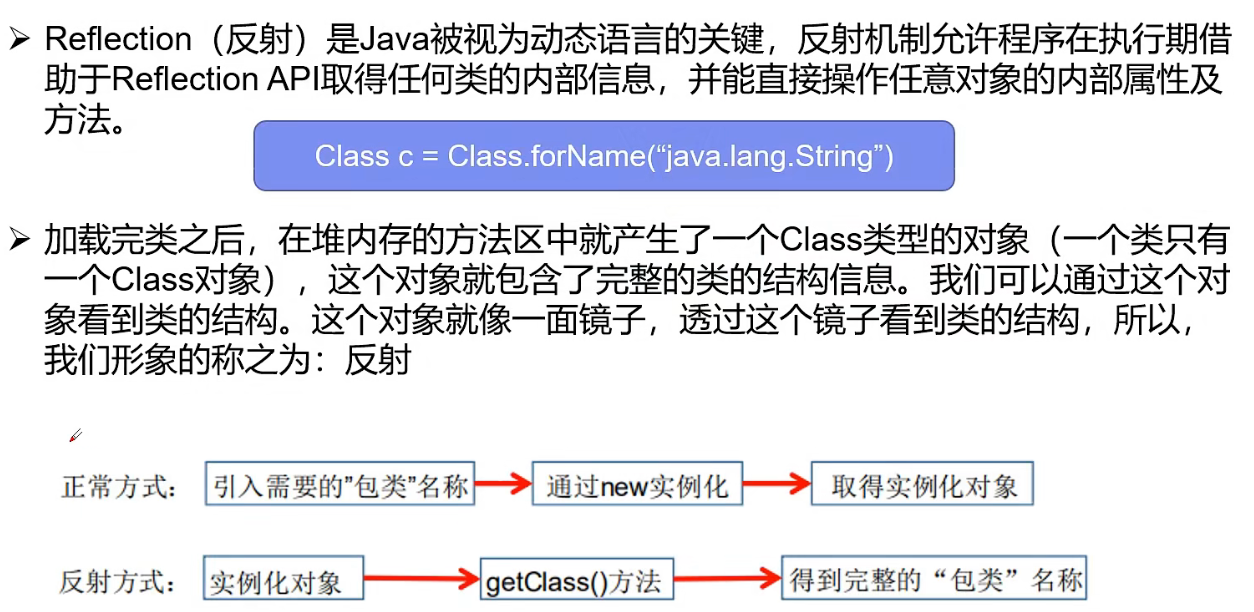
反射应用
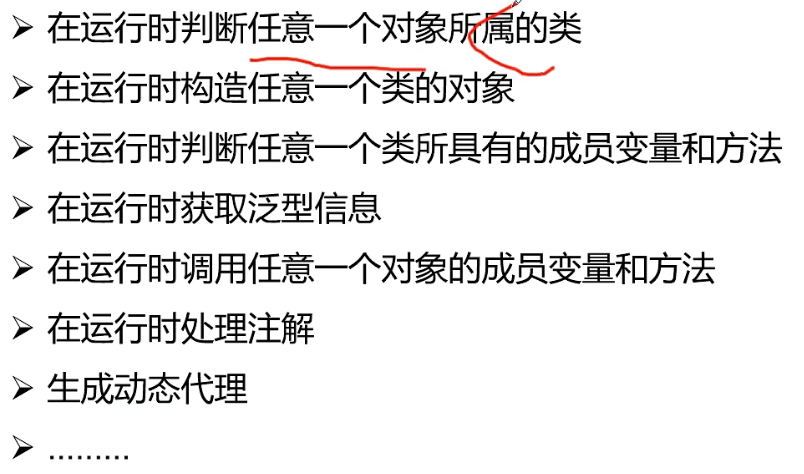
Class类
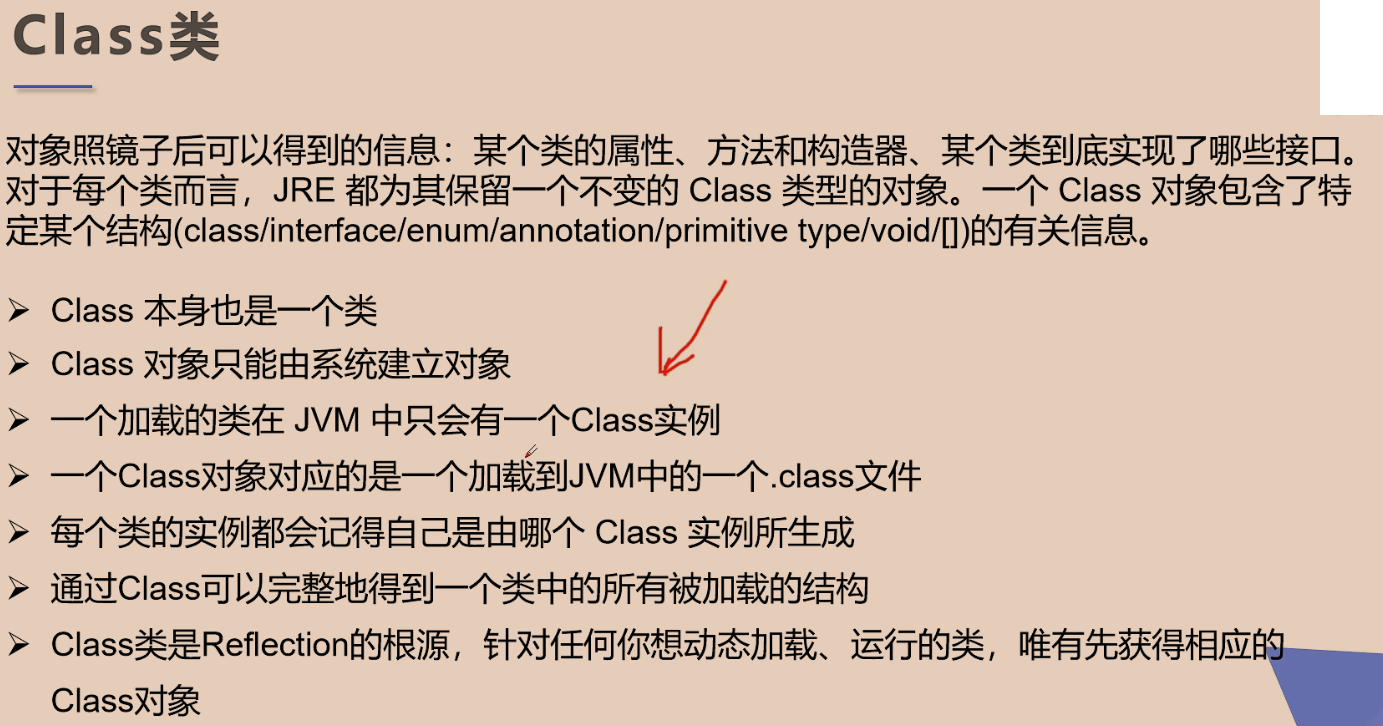
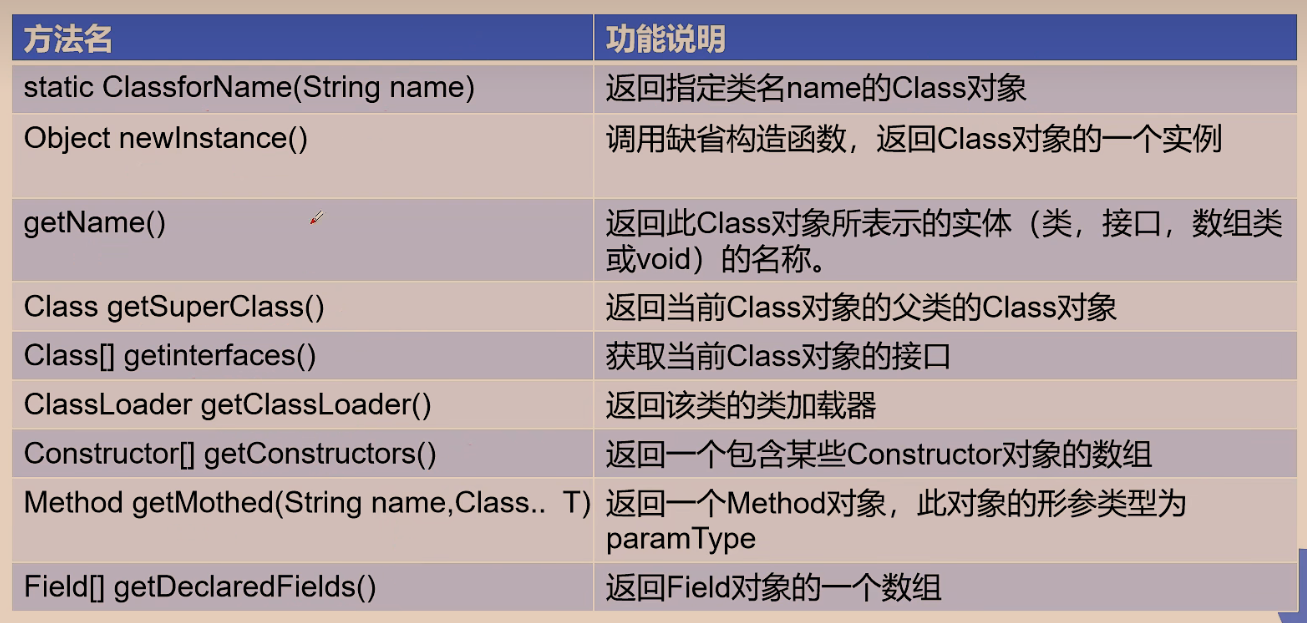
获得Class类
1
2
3
4
5
6
7
8
9
10
11
12
13
14
15
16
17
18
19
20
21
22
23
24
25
26
27
28
29
30
31
32
33
34
35
36
37
38
39
40
41
42
43
44
45
46
47
48
49
50
51
52
53
54
| package annotation;
public class test03 {
public static void main(String[] args) throws ClassNotFoundException {
Person person = new Student();
System.out.println(person.name);
Class c1 = person.getClass();
System.out.println(c1.hashCode());
Class c2 = Class.forName("annotation.Student");
System.out.println(c2.hashCode());
Class<Student> c3 = Student.class;
System.out.println(c3.hashCode());
Class c4 = c1.getSuperclass();
System.out.println(c4);
}
}
class Person {
public String name;
public Person() {
}
public Person(String name) {
this.name = name;
}
@Override
public String toString() {
return "Person{" +
"name='" + name + '\'' +
'}';
}
}
class Student extends Person {
public Student() {
this.name = "学生";
}
}
class Teacher extends Person {
public Teacher() {
this.name = "老师";
}
}
|
哪些类有Class对象
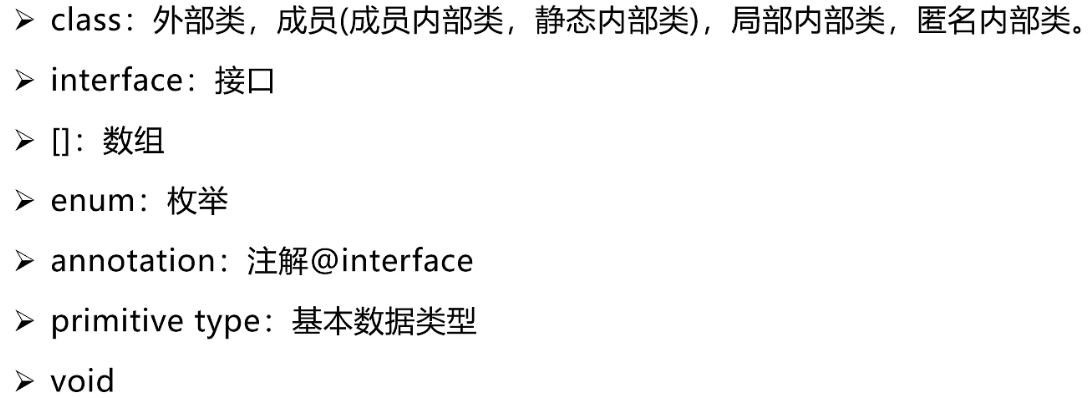
1
2
3
4
5
6
7
8
9
10
11
12
13
14
15
16
17
18
19
20
21
22
23
24
25
26
27
28
29
30
31
32
33
34
35
| package annotation;
import javax.xml.bind.Element;
import java.lang.annotation.ElementType;
public class Test04 {
public static void main(String[] args) {
Class c1 = Object.class;
Class c2 = Comparable.class;
Class c3 = String[].class;
Class c4 = int[][].class;
Class c5 = Override.class;
Class c6 = ElementType.class;
Class c7 = Integer.class;
Class c8 = void.class;
Class c9 = Class.class;
System.out.println(c1);
System.out.println(c2);
System.out.println(c3);
System.out.println(c4);
System.out.println(c5);
System.out.println(c6);
System.out.println(c7);
System.out.println(c8);
System.out.println(c9);
int[] a = new int[10];
int[] b = new int[100];
System.out.println(a.getClass().hashCode());
System.out.println(b.getClass().hashCode());
}
}
|
类加载内存分析
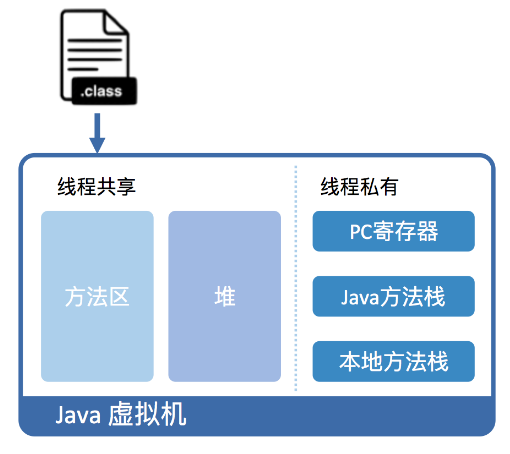
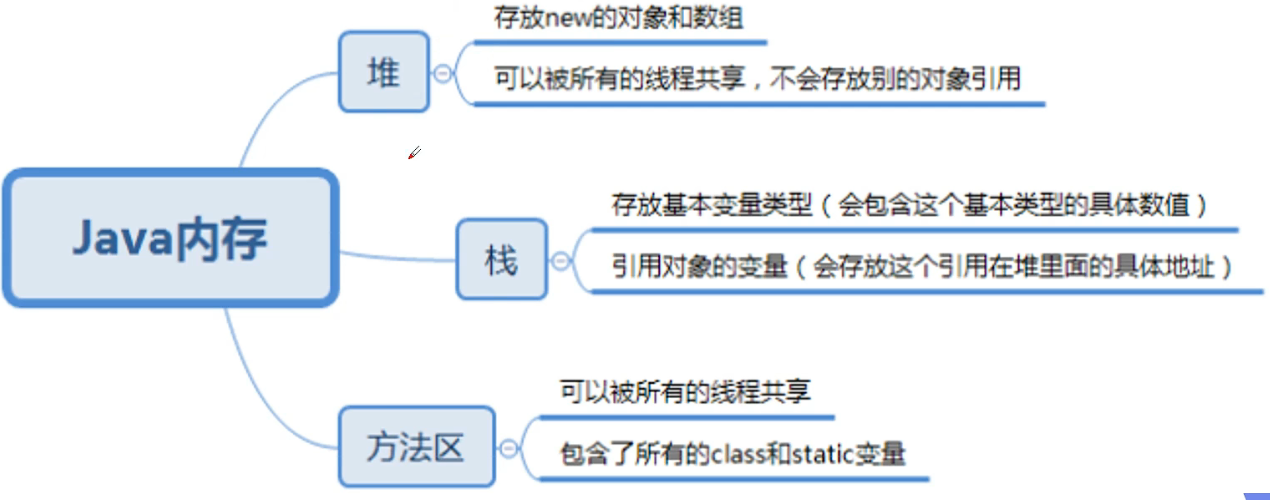
加载,链接,初始化
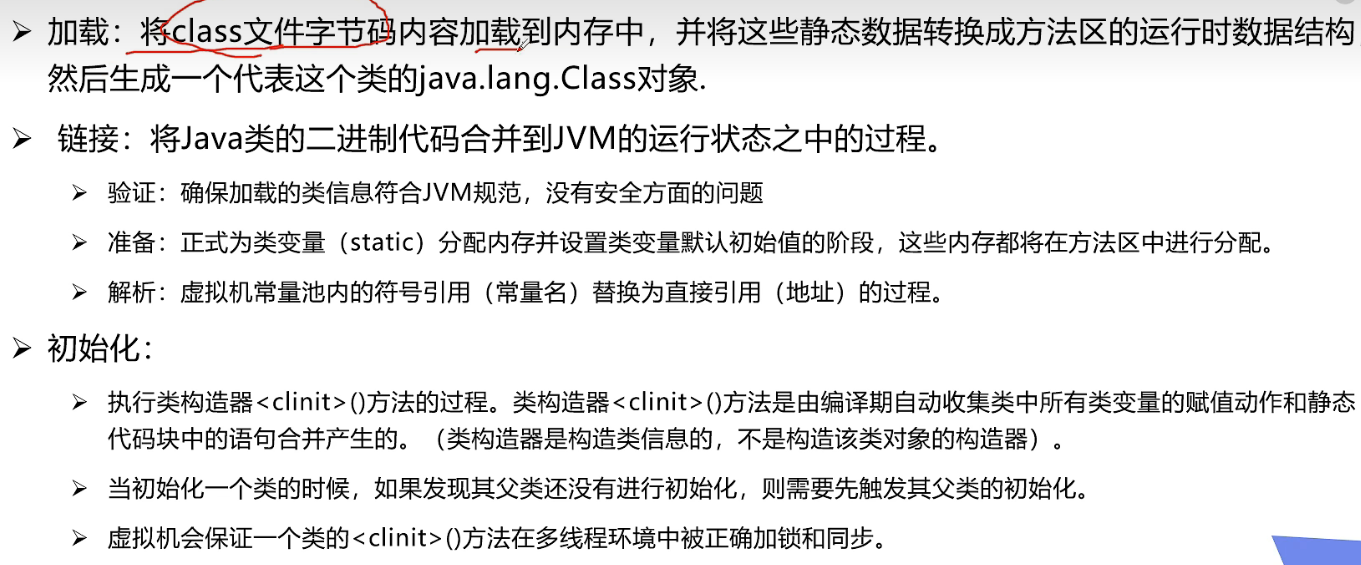
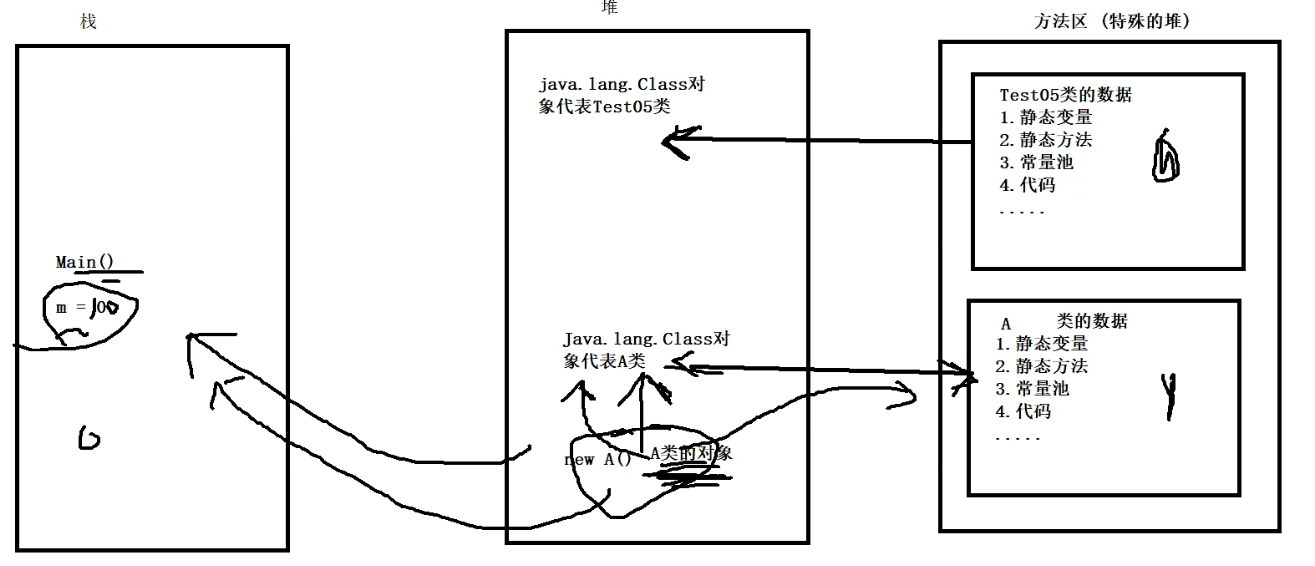
1.加载到内存,会产生一个类对应的Class对象
2.链接,链接结束后m=0
3.初始化<clinit> clinit就是class init的意思
1
2
3
4
5
6
7
8
9
10
11
12
13
14
15
16
17
18
19
20
21
| package annotation;
public class test05 {
public static void main(String[] args) {
A a = new A();
System.out.println(A.m);
}
}
class A {
static {
System.out.println("A类静态代码块初始化");
m = 300;
}
static int m = 100;
public A() {
System.out.println("A类的无参构造初始化");
}
}
|
什么时候类初始化
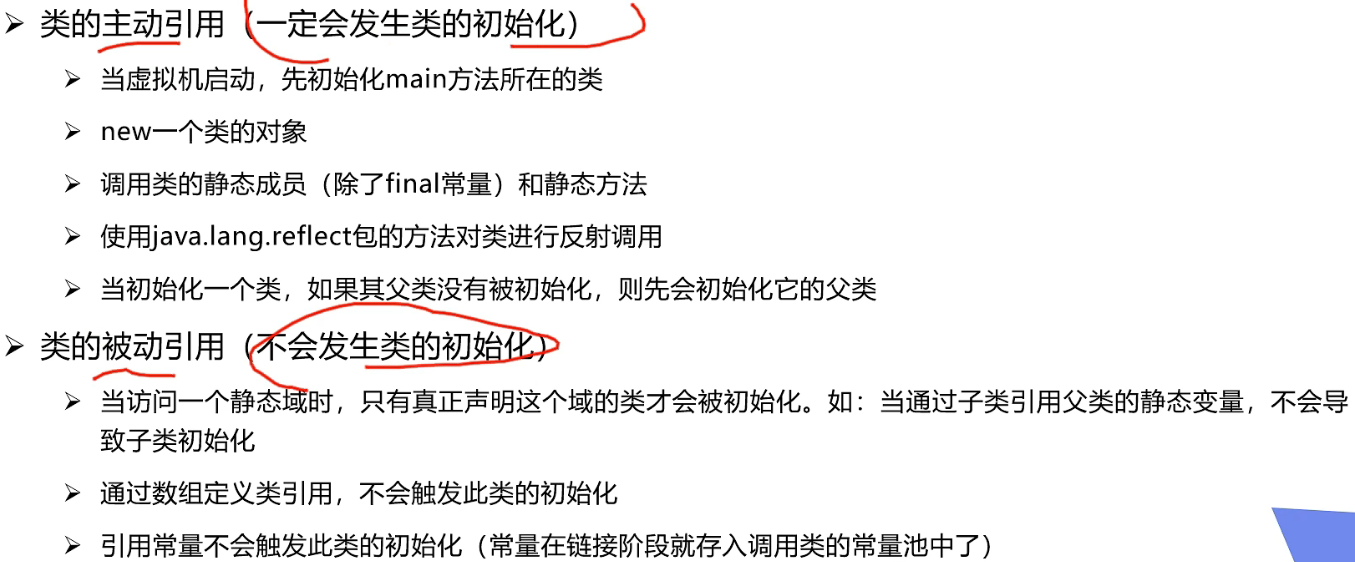
类的主动引用
1
2
3
4
5
6
7
8
9
10
11
12
13
14
15
16
17
18
19
20
21
22
23
24
25
26
27
28
29
30
31
32
33
| package reflection;
public class Test06 {
static {
System.out.println("Main类被加载");
}
public static void main(String[] args) throws ClassNotFoundException {
Son son = new Son();
Class.forName("reflection.Son");
}
}
class Father {
static int b = 2;
static {
System.out.println("父类被加载");
}
}
class Son extends Father {
static {
System.out.println("子类被加载");
m = 300;
}
static int m = 100;
static final int M = 1;
}
|
类的被动引用
1
2
3
4
5
6
7
8
9
10
11
12
13
14
15
16
17
18
19
20
21
22
23
24
25
26
27
28
29
30
31
32
33
| package reflection;
public class Test06 {
static {
System.out.println("Main类被加载");
}
public static void main(String[] args) throws ClassNotFoundException {
System.out.println(Son.M);
}
}
class Father {
static int b = 2;
static {
System.out.println("父类被加载");
}
}
class Son extends Father {
static {
System.out.println("子类被加载");
m = 300;
}
static int m = 100;
static final int M = 1;
}
|
类加载器的作用
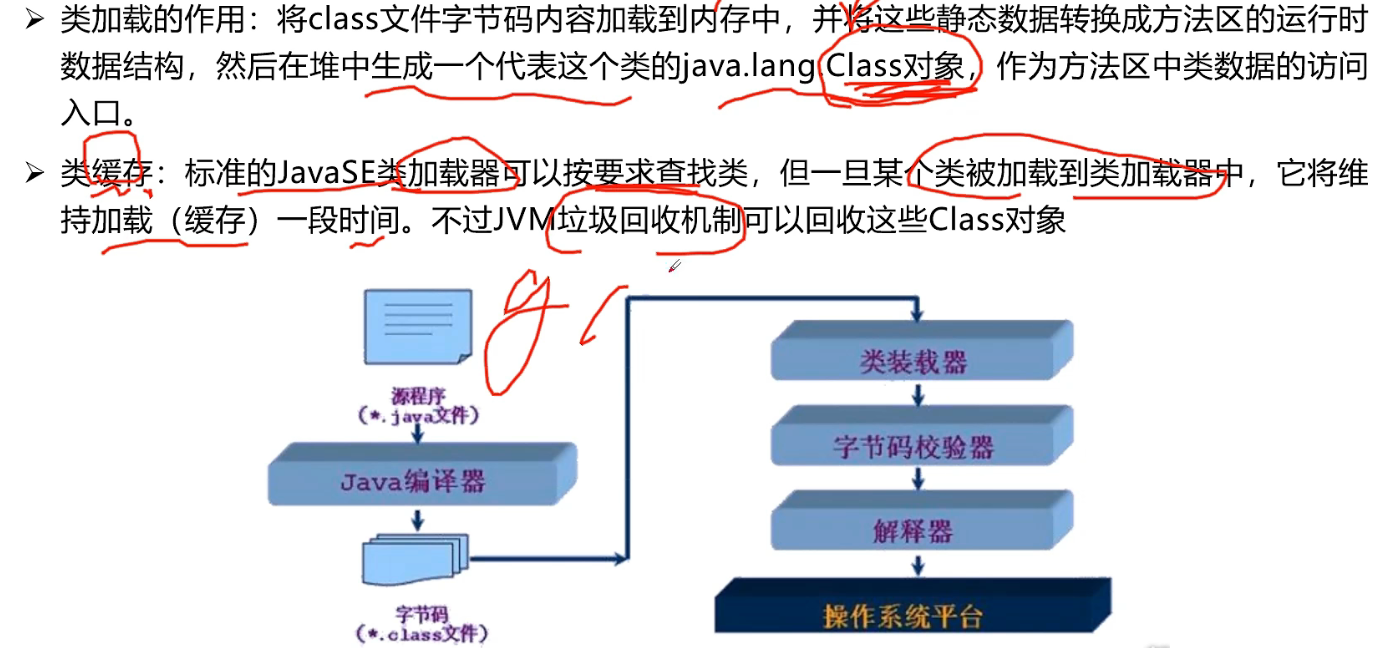
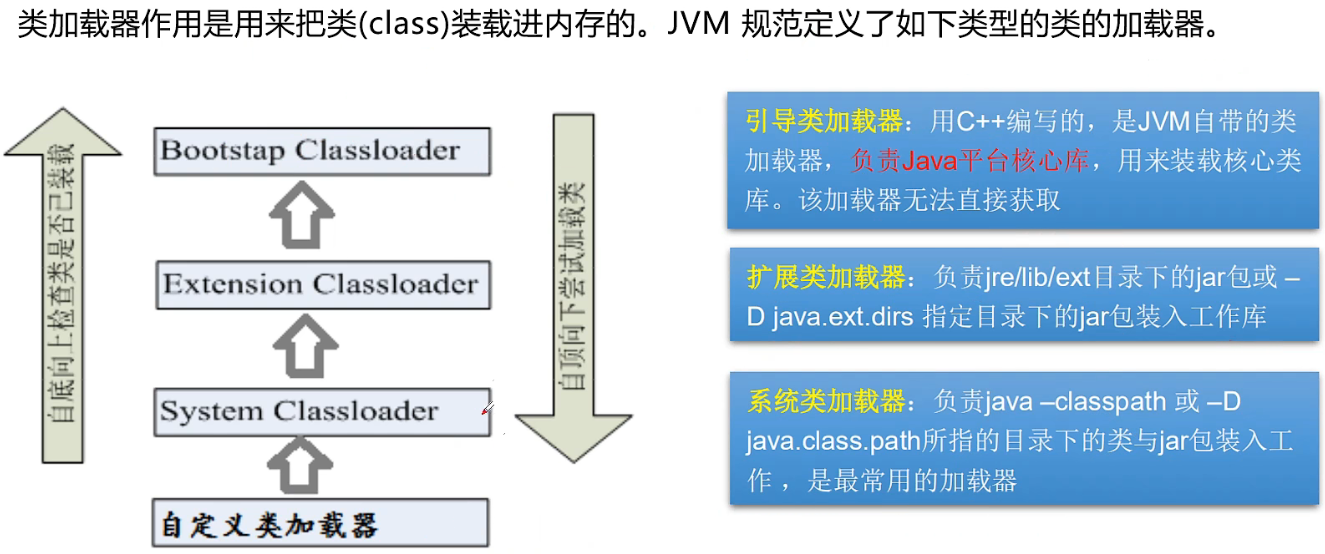
1
2
3
4
5
6
7
8
9
10
11
12
13
14
15
16
17
18
19
20
21
22
23
24
25
26
27
| package reflection;
import com.sun.xml.internal.ws.api.model.wsdl.WSDLOutput;
public class test07 {
public static void main(String[] args) throws ClassNotFoundException {
ClassLoader systemClassLoader = ClassLoader.getSystemClassLoader();
System.out.println(systemClassLoader);
ClassLoader parent = systemClassLoader.getParent();
System.out.println(parent);
ClassLoader parent1 = parent.getParent();
System.out.println(parent1);
ClassLoader classLoader = Class.forName("reflection.test07").getClassLoader();
System.out.println(classLoader);
classLoader = Class.forName("java.lang.Object").getClassLoader();
System.out.println(classLoader);
}
}
|
1
2
3
4
5
6
| 结果:
sun.misc.Launcher$AppClassLoader@18b4aac2
sun.misc.Launcher$ExtClassLoader@1b6d3586
null
sun.misc.Launcher$AppClassLoader@18b4aac2
null
|
通过Class对象获得类的信息
1
2
3
4
5
6
7
8
9
10
11
12
13
14
15
16
17
18
19
20
21
22
23
24
25
26
27
28
29
30
31
32
33
34
35
36
37
38
39
40
41
42
43
44
45
46
47
48
49
50
51
52
53
54
55
56
57
58
59
60
61
62
63
64
65
66
67
68
| package reflection;
import java.lang.reflect.Constructor;
import java.lang.reflect.Field;
import java.lang.reflect.Method;
public class test08 {
public static void main(String[] args) throws ClassNotFoundException, NoSuchFieldException, NoSuchMethodException {
Class c1 = Class.forName("reflection.User");
System.out.println(c1.getName());
System.out.println(c1.getSimpleName());
System.out.println("============");
Field[] fields = c1.getFields();
for (Field field : fields)
System.out.println(field);
fields = c1.getDeclaredFields();
for (Field field : fields)
System.out.println(field);
Field name = c1.getDeclaredField("name");
System.out.println(name);
System.out.println("=============");
Method[] methods = c1.getMethods();
for (Method method : methods)
System.out.println("正常的:" + method);
methods = c1.getDeclaredMethods();
for (Method method : methods)
System.out.println("getDeclaredMethods:" + method);
System.out.println("=================");
Method getName = c1.getMethod("getName", null);
Method setName = c1.getMethod("setName", String.class);
System.out.println(getName);
System.out.println(setName);
System.out.println("===============");
Constructor[] constructors = c1.getConstructors();
for (Constructor constructor : constructors)
System.out.println(constructor);
constructors = c1.getDeclaredConstructors();
for (Constructor constructor : constructors)
System.out.println("getDeclaredConstructors:" + constructor);
Constructor declaredConstructors = c1.getDeclaredConstructor(String.class, int.class, int.class);
System.out.println("指定:" + declaredConstructors);
}
}
|
1
2
3
4
5
6
7
8
9
10
11
12
13
14
15
16
17
18
19
20
21
22
23
24
25
26
27
28
29
30
31
32
33
34
35
36
37
38
39
40
| 结果:
annotation.User
User
============
private java.lang.String annotation.User.name
private int annotation.User.id
private int annotation.User.age
private java.lang.String annotation.User.name
=============
正常的:public java.lang.String annotation.User.toString()
正常的:public java.lang.String annotation.User.getName()
正常的:public int annotation.User.getId()
正常的:public void annotation.User.setName(java.lang.String)
正常的:public void annotation.User.setId(int)
正常的:public int annotation.User.getAge()
正常的:public void annotation.User.setAge(int)
正常的:public final void java.lang.Object.wait() throws java.lang.InterruptedException
正常的:public final void java.lang.Object.wait(long,int) throws java.lang.InterruptedException
正常的:public final native void java.lang.Object.wait(long) throws java.lang.InterruptedException
正常的:public boolean java.lang.Object.equals(java.lang.Object)
正常的:public native int java.lang.Object.hashCode()
正常的:public final native java.lang.Class java.lang.Object.getClass()
正常的:public final native void java.lang.Object.notify()
正常的:public final native void java.lang.Object.notifyAll()
getDeclaredMethods:public java.lang.String annotation.User.toString()
getDeclaredMethods:public java.lang.String annotation.User.getName()
getDeclaredMethods:public int annotation.User.getId()
getDeclaredMethods:public void annotation.User.setName(java.lang.String)
getDeclaredMethods:public void annotation.User.setId(int)
getDeclaredMethods:public int annotation.User.getAge()
getDeclaredMethods:public void annotation.User.setAge(int)
=================
public java.lang.String annotation.User.getName()
public void annotation.User.setName(java.lang.String)
===============
public annotation.User()
public annotation.User(java.lang.String,int,int)
getDeclaredConstructors:public annotation.User()
getDeclaredConstructors:public annotation.User(java.lang.String,int,int)
指定:public annotation.User(java.lang.String,int,int)
|
反射动态创建对象
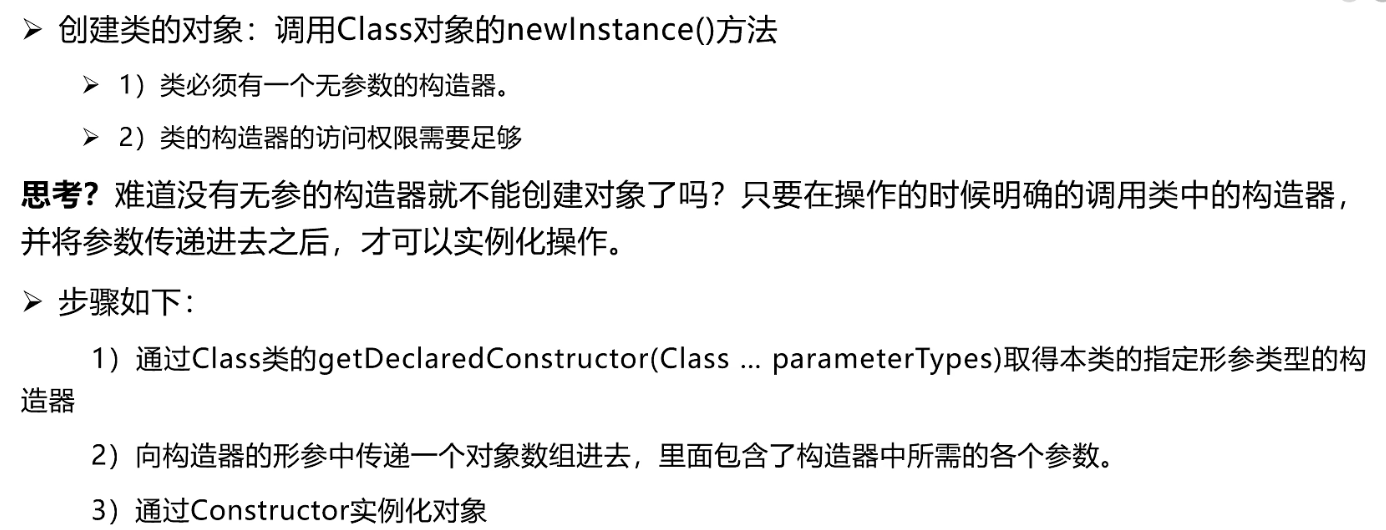
1
2
3
4
5
6
7
8
9
10
11
12
13
14
15
16
17
18
19
20
21
22
23
24
| package reflection;
import java.lang.reflect.Constructor;
import java.lang.reflect.InvocationTargetException;
public class test09 {
public static void main(String[] args) throws ClassNotFoundException, IllegalAccessException, InstantiationException, NoSuchMethodException, InvocationTargetException {
Class c1 = Class.forName("reflection.User");
User user = (User)c1.newInstance();
System.out.println(user);
Constructor constructor = c1.getDeclaredConstructor(String.class, int.class, int.class);
User user2 = (User)constructor.newInstance("郭霖", 001, 18);
System.out.println(user2);
user2.setName("guolin");
System.out.println(user2);
}
}
|
反射操作注解
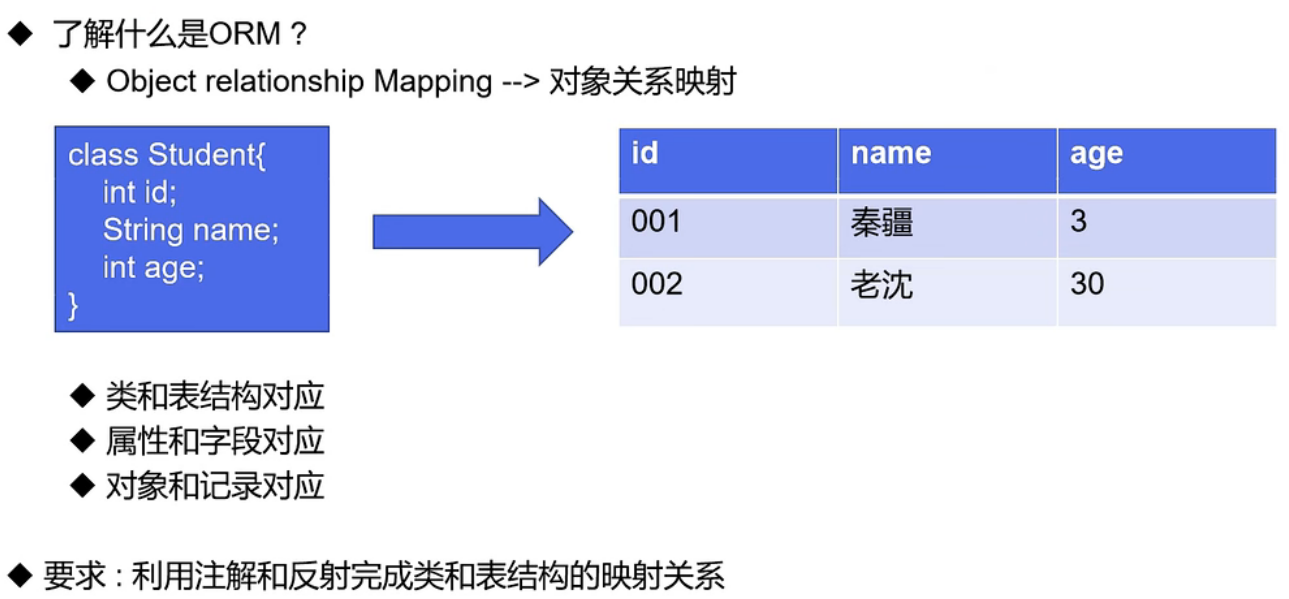
1
2
3
4
5
6
7
8
9
10
11
12
13
14
15
16
17
18
19
20
21
22
23
24
25
26
27
28
29
30
31
32
33
34
35
36
37
38
39
40
41
42
43
44
45
46
47
48
49
50
51
52
53
54
55
56
57
58
59
60
61
| package reflection;
import com.sun.deploy.security.ValidationState;
import java.lang.annotation.*;
public class test12 {
public static void main(String[] args) throws ClassNotFoundException, NoSuchFieldException {
Class c1 = Class.forName("reflection.Student2");
Annotation[] annotations = c1.getAnnotations();
for (Annotation annotation : annotations) {
System.out.println(annotation);
}
Table table = (Table)c1.getAnnotation(Table.class);
String value = table.value();
System.out.println(value);
java.lang.reflect.Field f = c1.getDeclaredField("name");
Field annotation = f.getAnnotation(Field.class);
System.out.println(annotation.columnName());
System.out.println(annotation.type());
System.out.println(annotation.length());
}
}
@Table("db_student")
class Student2{
@Field(columnName = "db_id", type = "int", length = 10)
private int id;
@Field(columnName = "db_age", type = "int", length = 10)
private int age;
@Field(columnName = "db_name", type = "varchar", length = 3)
private String name;
public Student2() {
}
}
@Target(ElementType.TYPE)
@Retention(RetentionPolicy.RUNTIME)
@interface Table {
String value();
}
@Target(ElementType.FIELD)
@Retention(RetentionPolicy.RUNTIME)
@interface Field {
String columnName();
String type();
int length();
}
|


















